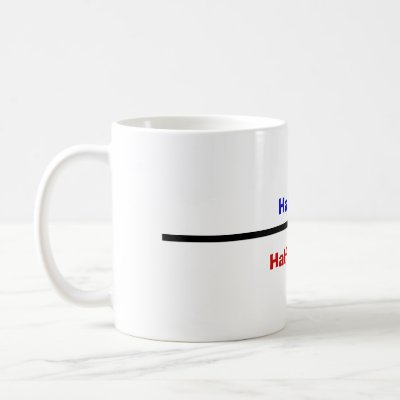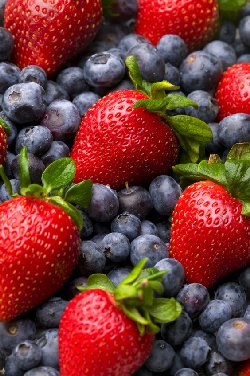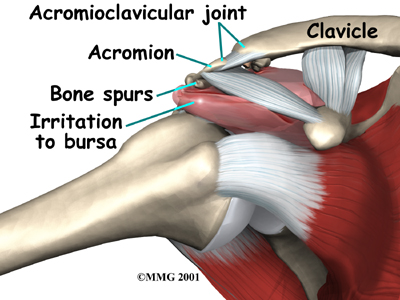Seeing as how it is the last day of the year, I figure I'd be a negligent blogger without a post about the past year and oh-so-wise words on setting goals.
2009, for me, was a year that was far more "half-full" than "half empty". In fact, I'd say it was all good, and it's just a matter of looking at it:
- I became Crossfit Level 1 certified; this would have never, ever happened had it not been for Coach Brandt. I would have never even considered it had it not been for his words of encouragement. This certification enabled me to coach at our affiliate, which has been an incredibly rewarding experience.
- I attended Robb Wolf's Nutrition Certification, which was initially thee only cert I was interested in---and I'm damn glad I went. Robb could talk for literally DAYS an not cover what needs to be covered. Even his off-tangents during the lecture were full of applicable info. Since he has subsequently "left" the employment of Crossfit, there's a HUGE number of folks who won't get to see him in the near future in that capacity. I went into that cert well-informed (if I do say so), but I was humbled leaving it.
- We* opened a New, Kickass Facility. It's over 4000sq ft, has a killer welded pullup station, MULTIPLE lifting platforms, a la Catalyst Athletics, lotsa whiteboard, an awesome "leader" board with the Hero/Girls/Benchmark workouts...I could go on.
- *I always catch myself saying "we", as if I'm an owner of Crossfit Lethbridge. I'm not, but I feel strongly enough about the place and people that I feel I have a stake in it. I'm going to continue saying "we", in reference to CFLA. It's mine, damnit. :)
- I broke many, many PRs. Looking back through my logbook (YOU have a workout logbook, right? If not, you WILL for 2010. If I see a client that isn't writing shit down in 2010....) I'm utterly amazed at the progress I made in 2009. Everything from max strength, muscular endurance, technical coordination (read: elusive double unders) and power output increased. This isn't a testament to me---it's a testament to the efficacy of Crossfit-style training.
- I successfully dealt with an injury. Wait, WTF? Didn't that injury cause you to not be able to participate in 90% of the regular programming? Isn't your overhead strength the same as a 9 year old girl? Didn't you have to deal with daily pain, not to mention the mental pain and stress?
What, no "resolutions"? No, fuck off with resolutions. Resolutions mean that something has to be "resolved", like a problem or issue. A goal is something to work towards, something that requires effort to be attained. The cup is half full, remember?
Points to consider when setting goals:
1) Quantify Your Goals. What I mean by this is put a number or time limit on your goal; it could be a 405 pound deadlift, or it could be run 5km by Aug 1st. Goals are more likely to NOT to happen if they are subjective---it makes for a VERY easy out, since your mind is your worst enemy. A goal of "I'll do better in 2010" is so open ended and subjective that it's a waste time even thinking about it, not to mention pathetic.
2) Don't Shoot Low. If you can do 10 double unders in a row, and your goal for 2010 is 11, I'll beat you like a rented mule with your Buddy Lee rope. Aim high! If you put down 50 for 2010, and December rolls around and you AMRAP out 47, is that failure? Christ, no, that huge success. Aiming low is for weak people afraid of failure. Remember what I think about Failure.
3) Write 'Em Down, and put them where you can see them. Ever look at that board in the warmup section with all the little white bits of paper pinned to it and wonder what it's for? That's 2009 goals for CFLA coaches and clients. It's a reminder to you what they are, and having them in a public place is
ACCOUNTABILITY.
My Goals for 2010
- Put on 10lbs of LBM. This would bring me to 175 from 165. And I'm talking lean body mass, not just 10 pounds of fat and water weight. I'm roughly sitting at around 8-9%BF, and I'd like to maintain that. This one will require conscious effort throughout the year, and re-visting the Land of Moo. I have a line on some high quality, non-homogenized, organic milk, so I can be a dairy junkie like Sean'O. Maybe we'll have to have a race to 175#??
- Increase my Deadlift to 412.5#. This one will be tough; even after doing my Strength Bias program for the last few months, I'm still stuck at 385#. 412.5# is exactly 2.5x my bodyweight, but it's a helluva long ways away from 385#. Nonetheless, it'll happen. That 10lbs of LBM will come in handy here.
- Get my 500m row under 1:25.
- Get my 5km run under 22 minutes.
- Dial in my diet 90/10. That is, 90% of the time I'm eating what I should be, and 10% I eat what I shouldn't be. I won't accept 20% slop here. (Glassman will get that. Ha!)
- AVOID injuries by training SMARTER. Pretty hard to quantify, or even qualify a goal like this---but it's just something that has to happen. How do I do this? first off, I plan on not slacking off in my warmups. We have PHENOMENAL warmup criteria at CFLA. Coach Brandt had put together a couple of great "A" and "B" warmups, consisting of full ROM mobility and dynamic movements with a very Verstegen-esque quality (which rocks. One of the best things about Verstegen's Core Performance was the mobility drills) and I've noticed that Coach Gillespie has a knack for great warmups also. Face it: old guys like warmups, 'cause they hate getting hurt.
I haven't been logging all my workouts here; I've hit the firehall a couple of times over the Christmas break, which has just consisted of interval sprints, some core work, and either power cleans or front squats. Both my knees have been "aching" lately---since my incident on Dec 10th, the right has been sore when squatting with significant weight. In a mild drunken haze on Dec 25th, I crunched my left so damn hard into the coffee table at home I nearly threw up. So both seem to be throbbing now. Time to lay off the heavy squats.
Numbers Matter
I did get a nice PR Dec 18th on my 500m row by almost a second; my previous time was 1:28.6 back in April-ish, and I squeaked out a 1:27.9 with a massive effort thanks to Coach Brandt's encouragement. I like the 500m as a measure of power output and glycolytic endurance. I hadn't attempted this in a while, so my self-programing and shoulder fiasco haven't hindered my gains that much.
Dec 30th, CFLA, 1PM
Overhead Press
45# x10
65#x10
95#x5
115#x1,0. Wow, lol. Remember I was saying I was as weak as a 9 year old girl? I wasn't kidding. At least I have mentally strong shoulders, haha. This surprised me, actually. No pain, just....stuck, about 1/4 of the way up. Actually racking it with my elbows down (vs high, as in front squat rack) does cause pain. Seems to separate my AC joint. Same with a racked kettlebell. Anyways, carry on...
115# x5 Push Press
125# x5
135# x5. Surprisingly easy, with only mild pain at lockout. Nice reminder that at least I have some decent explosive hip power. And we all know what matters more. :-)
MetCon
5 Rounds For Time:
10 Wall Ball Shots, 10' , 20#
10 Chest To Bar Pullups
10 Glute-Ham Developer Situps
7:45. Last time was Oct 8, 9:40. I must have been REALLY dogging it, because a 2 minute PR is just silly. Nothing in my notebook, but I didn't break at all this time except for 5 breaths between the WBS and pullups.
Wall balls felt good on the shoulder, no pain during, and as I type this, it feels pretty good. I'm honestly wondering if bursitis and inflammation could actually be the cause of all the damn pain and instability. I've talked to a few other Crossfitters about shoulder issues, and some have had stubborn bursitis. I'll continue to add back more overhead volume, and see what happens.
Heading to Waterton National park this evening for dinner, and then skiing to Cameron Lake in the morning. Awesome way to break in 2010!!!
































 2-subunit expression as well as short- and long-term work capacity in humans
2-subunit expression as well as short- and long-term work capacity in humans 55 km/wk). For the SET group, the expression of the muscle Na+-K+ pump
55 km/wk). For the SET group, the expression of the muscle Na+-K+ pump  2-subunit was 68% higher (P < 0.05) and the plasma K+ level was reduced (P < 0.05) during repeated intense running after 9 wk. Performance in a 30-s sprint test and the first of the supramaximal exhaustive runs was improved (P < 0.05) by 7% and 36%, respectively, after the speed endurance training period. In the SET group, maximal O2 uptake was unaltered, but the 3-km (3,000-m) time was reduced (P < 0.05) from 10.4 ± 0.1 to 10.1 ± 0.1 min and the 10-km (10,000-m) time was improved from 37.3 ± 0.4 to 36.3 ± 0.4 min (means ± SE). Muscle protein expression and performance remained unaltered in the control group. The present data suggest that both short- and long-term exercise performances can be improved with a reduction in training volume if speed endurance training is performed and that the Na+-K+ pump plays a role in the control of K+ homeostasis and in the development of fatigue during repeated high-intensity exercise.
2-subunit was 68% higher (P < 0.05) and the plasma K+ level was reduced (P < 0.05) during repeated intense running after 9 wk. Performance in a 30-s sprint test and the first of the supramaximal exhaustive runs was improved (P < 0.05) by 7% and 36%, respectively, after the speed endurance training period. In the SET group, maximal O2 uptake was unaltered, but the 3-km (3,000-m) time was reduced (P < 0.05) from 10.4 ± 0.1 to 10.1 ± 0.1 min and the 10-km (10,000-m) time was improved from 37.3 ± 0.4 to 36.3 ± 0.4 min (means ± SE). Muscle protein expression and performance remained unaltered in the control group. The present data suggest that both short- and long-term exercise performances can be improved with a reduction in training volume if speed endurance training is performed and that the Na+-K+ pump plays a role in the control of K+ homeostasis and in the development of fatigue during repeated high-intensity exercise.




